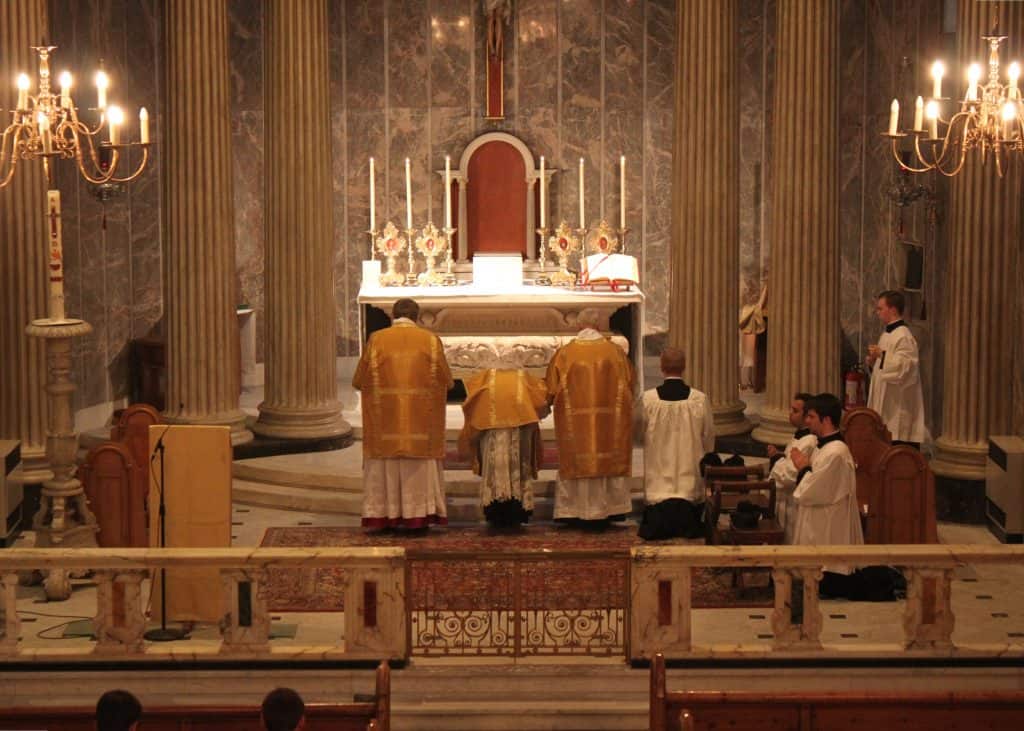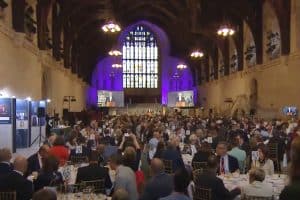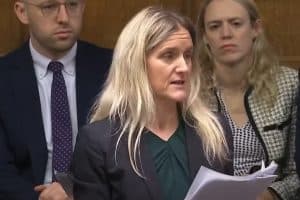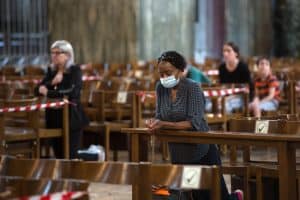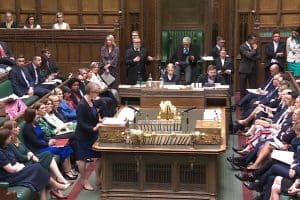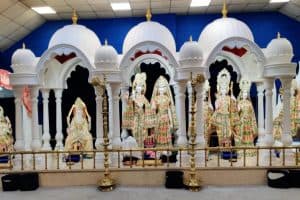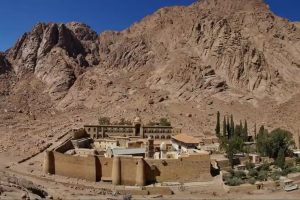By Catherine Pepinster
With Pope Francis recovering after an operation, Vatican observers might have thought that this was a moment for the Pontiff to enjoy a little rest and recuperation. Not a bit of it.
He has just reignited one of the Catholic Church’s major liturgical rows — a row that first erupted 60 years ago, simmered, then was reignited by his predecessor, Pope Benedict XVI and is now blazing again, thanks to Francis — over the way in which Catholics worship.
In a new document issued on Friday, Francis has tightened restrictions on celebrating what is known as the Old Rite or Tridentine Latin Mass — a form of worship that was more or less abandoned 60 years ago after the Second Vatican Council, to the consternation of a vocal minority of Catholics. It even caused schism with some breaking away to make a separate church.
Then in 2007 Pope Benedict XVI sought to make it easier for Catholics to attend Old Rite masses. Now in his motu proprio (apostolic letter), Traditionis Custodes (Guardians of Tradition), his successor Pope Francis has decreed that Old Rite masses should no longer be so easily accessible.
But in an effort to avoid criticising his predecessor, he says in a letter to bishops accompanying the document that a gesture supposed to foster unity has been exploited to further divisions. In other words, it is devotees of the Old Rite, rather than Benedict XVI, who are the problem.
According to Francis: “An opportunity offered by St John Paul II and, with even greater magnanimity, by Benedict XVI, intended to recover the unity of an ecclesial body with diverse liturgical sensibilities, was exploited to widen the gaps, reinforce the divergences, and encourage disagreements that injure the church, block her path, and expose her to the peril of division.”
The document explains that in future priests who celebrate the Old Rite must secure permission from their bishop to continue doing so, and bishops are responsible for determining when and where this rite is used. Any priest who wants to start using the Old Rite who is ordained after this apostolic letter’s publication will have to seek permission from his bishop who in turn must inform Rome. In other words, there is going to be policing of the Old Rite via the dioceses and the Vatican.
Francis’s actions are much more, however, than an intervention over people’s preferences regarding how they worship. They are also about Catholics’ understanding of the church they belong to, how they express that — and also how they relate to others. Above all, it is about what Catholics make of the Second Vatican Council, the key moment in the Catholic Church when it sought to modernise and rethink its relations with the world, with other Christian denominations and with other faiths. A frequently used metaphor for the council is that it was the moment when Pope John XXIII flung open the shutters of the church to the world and let it in.
Critics of the Second Vatican Council, who considered it to be a betrayal of tradition, have used the Old Rite as vehicle for their opposition. They have often been critical of this Pope and have quickly responded to Francis’s document, with the traditionalist website, Rorate Caeli, calling it “shocking and terrifying”. The Latin Mass Society, based in the UK, says it is “a grave disappointment” and that its “overall negative judgment” of the Old Rite is “wholly unwarranted”.
Francis has been saddened, he explains in a letter to bishops accompanying his motu, that the Tridentine Mass has been “characterised by a rejection not only of the liturgical reform, but of the Vatican Council II itself, claiming, with unfounded and unsustainable assertions, that it betrayed the tradition and the ‘true church’”.
The Pope says that to doubt the council is “to doubt the Holy Spirit himself who guides the church,” arguing that the church’s liturgy has been “adapted many times over the course of the centuries according to the needs of the day, not only be preserved but renewed ‘in faithful observance of the tradition’.”
For decades, traditional and liberal Catholics have argued about what the council meant — whether it was a revolution or a gradual evolution. Pope Benedict XVI’s theory — much loved by traditionalists — was a hermeneutic of continuity, rather than a break with the past, and so Catholics who wanted to worship in the old way should be allowed to do so. Progressive, liberal Catholics preferred a different theory — what they called a hermeneutic of reform.
In 2007, it was the liberals who were outraged by a Pope’s intervention. Then, Benedict XVI issued the document Summorum Pontificum, widening access to the Tridentine Mass. In this he stated that which that the post-Vatican II Roman missal, issued by Pope Paul VI in 1970, is the ordinary form of the Roman rite, and the prior version — last issued by Pope John XXIII in 1962 — is the Roman rite’s extraordinary form. In other words, they are two forms of one rite.
In Summorum Pontificum, Benedict also broadened access to the Latin Mass, allowing priests and faithful who wish to celebrate the extraordinary form to do so, and encouraging parish priests to offer a Latin Mass if a group of parishioners request it. He also effectively gave the go-ahead for lobbying, saying that the faithful could go to their bishop or even the Vatican if their requests for celebration of the extraordinary form were denied.
For some Catholics, attending mass is not only a religious experience and a connection with God, but a connection with their forebears. That nostalgia was expressed in Benedict’s comments in his 2007 document when he said: “What earlier generations held as sacred, remains sacred and great for us too, and it cannot suddenly be forbidden.”
It mattered to those Catholics to kneel, with the priest’s back to them so that he and they are all facing ad orientem (to the east) towards the altar and recite prayers such as Credo in unum deum (I believe in one God), just as generations did before them.
In this country, some people felt abandoning Latin and the Old Rite’s rubrics was particularly grievous because this was the mass that Catholics had celebrated who were persecuted during the Reformation. They had died for this mass, they argued.
But more liberal Catholics, while also keen to honour martyrs, considered the need to be ecumenical with a mass said in the vernacular, with modernised rubrics (instructions and formulae for the mass), that brought them closer to other denominations, more important. In the modern age, they believed, Catholics should also attend mass in their own language, not the ancient one of the Roman Empire.
They were also deeply concerned by the Old Rite’s special prayers for Good Friday and the way they described the Jews. A prayer that described them as “perfidious Jews” was removed by John XXIII but the prayer still requested that God take “that people away … from their darkness” and liberate them from “their blindness”, a text inspired by one of the letters of St Paul.
Some months after the 2007 document was published, Benedict amended the Good Friday prayer for the Jews for the Old Rite to say: “Let us also pray for the Jews that God our Lord should illuminate their hearts, so that they will recognise Jesus Christ, the Saviour of all men”. But the original liberalising of use of the Old Rite had already caused consternation.
While Francis has said that Pope Benedict sought to foster unity, he is forthright in his own understanding of the version of the Mass that really matters. He says that the liturgy that emerged from the Second Vatican Council often referred to as the novus ordo, is “the unique expression of the lex orandi [law of prayer] of the Roman Rite.”
“It belongs to the diocesan bishop, as moderator, promoter, and guardian of the whole liturgical life of the particular church entrusted to him, to regulate the liturgical celebrations of his diocese,” the Pope said, insisting that is the “exclusive competence” of the bishop to authorise the use of the 1962 Latin Mass in his diocese, “according to the guidelines of the apostolic see”.
Francis’s recognition that the Old Rite can be a vehicle for dissent is also evident in his warning that bishops must ensure that groups who now celebrate the Latin Mass “do not deny the validity and the legitimacy” of the Second Vatican Council’s liturgical reforms.
When the Latin Mass is celebrated, the readings must be done “in the vernacular language”, rather than Latin, and “using translations of the sacred scripture approved for liturgical use by the respective episcopal conferences”.
While the previous pontificate also saw heated debate within the church, this time is different, and not only because the current pope is an advocate of the New Rite not the old. It is because the previous pope, supporter of the Old Rite, is still alive. It remains to be seen whether those who are furious with Francis will seek to rouse the retired pontiff to get involved in the latest liturgical dispute.

